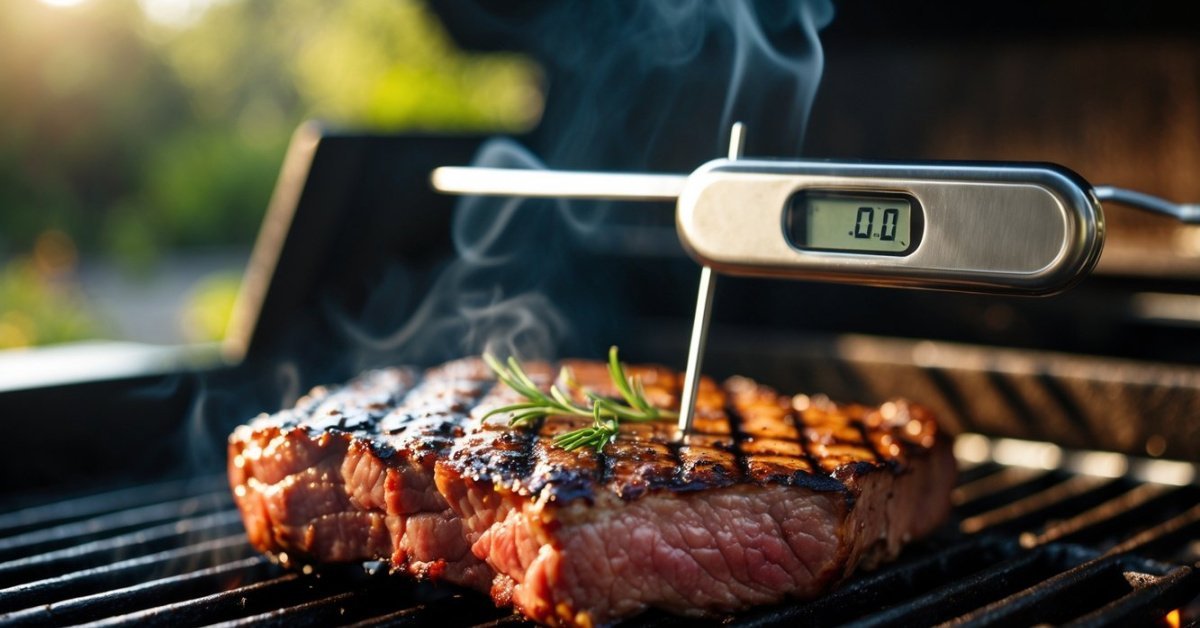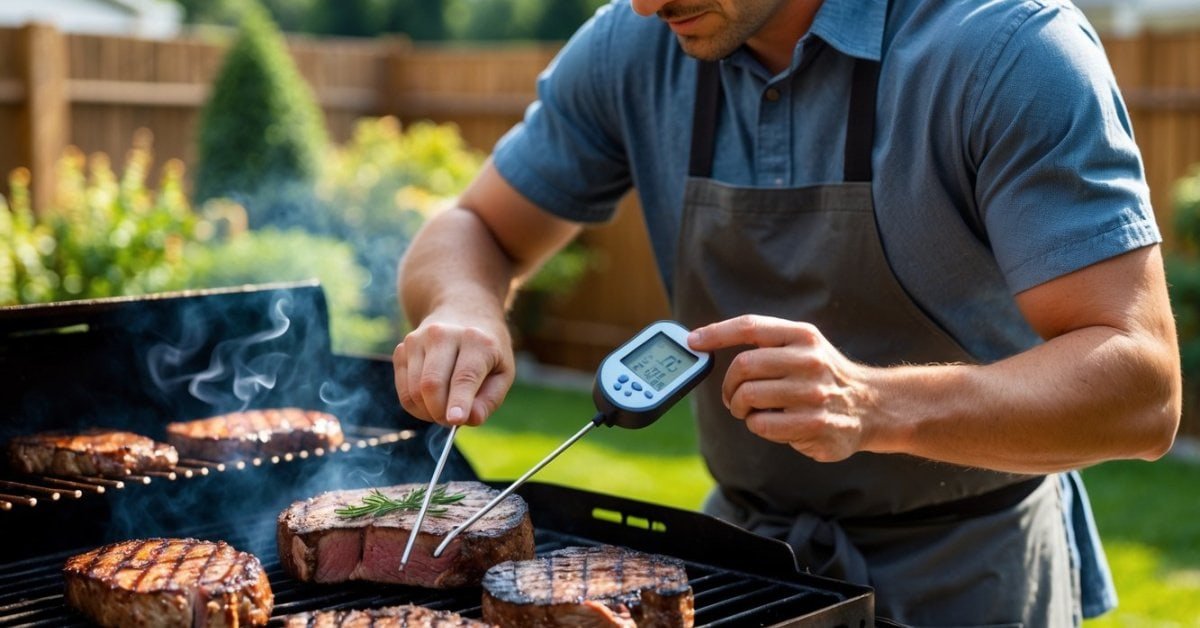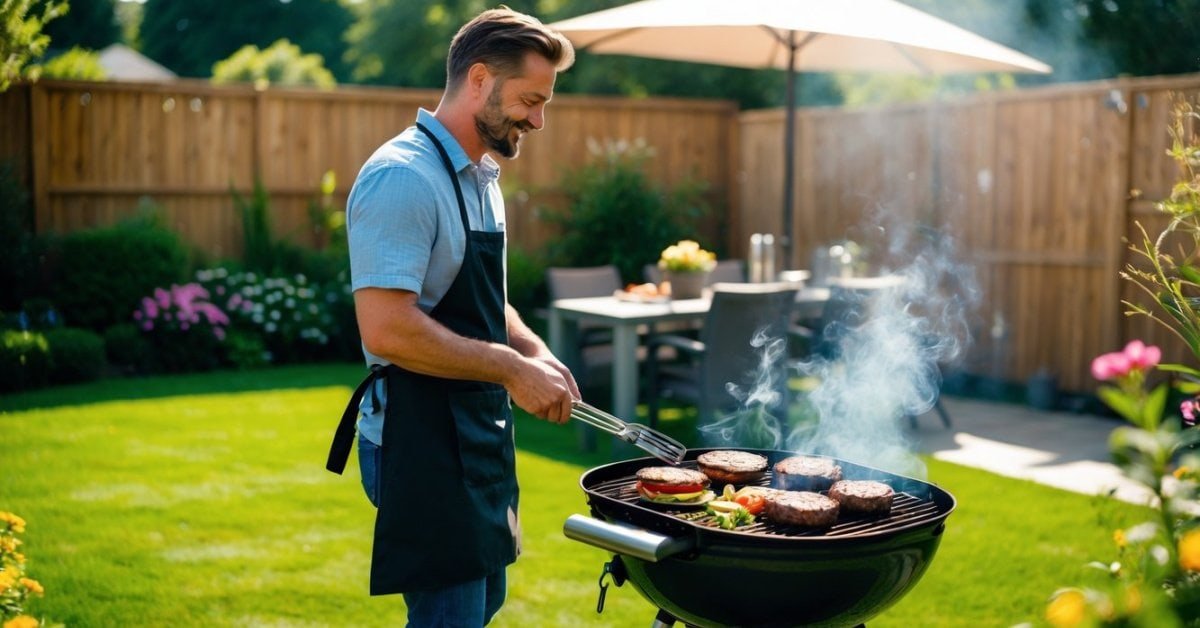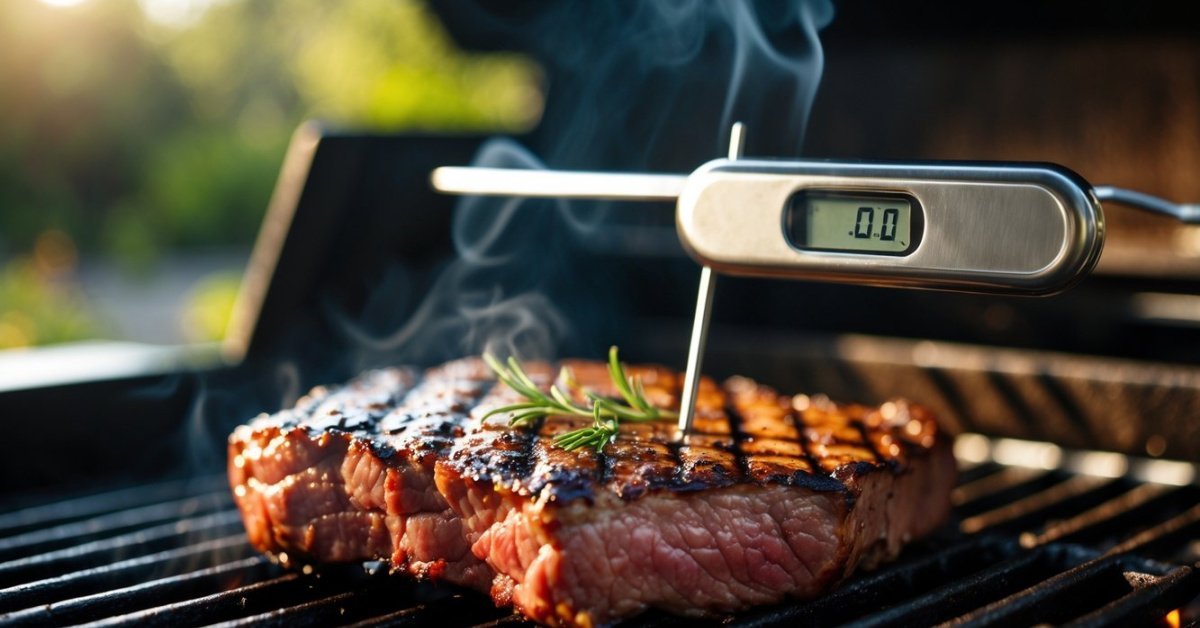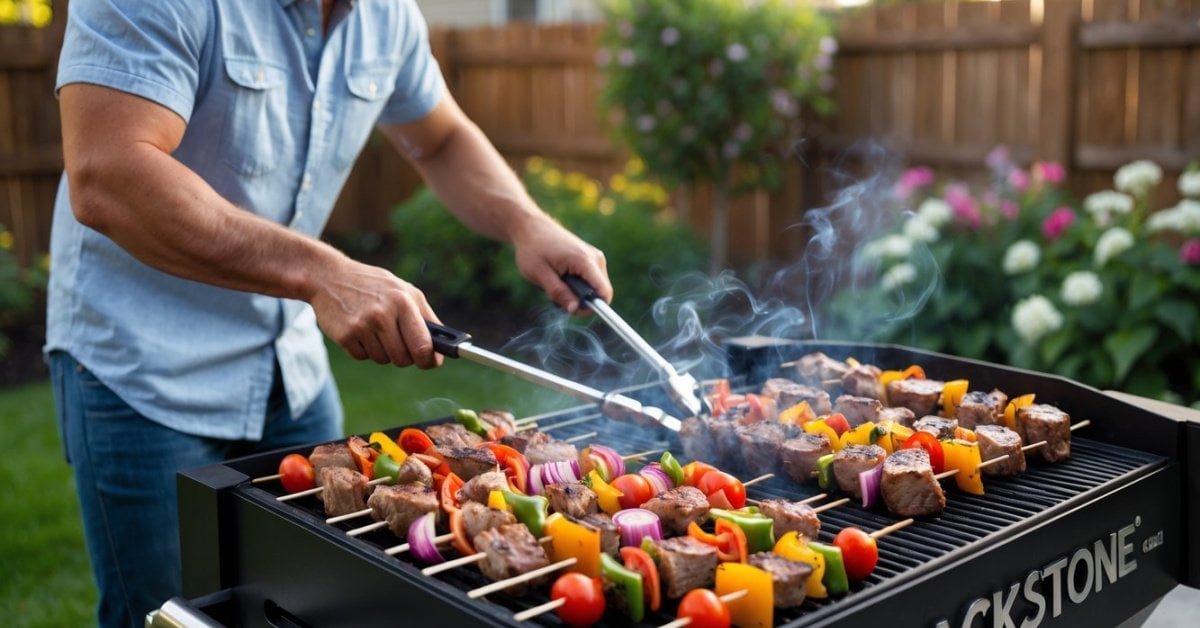I’ve always loved gadgets that make life easier and smarter. When it comes to keeping tabs on temperature—whether it’s for my home, my food, or even my health—thermometers have come a long way from the simple glass tubes I remember as a kid. These days smart thermometers are popping up everywhere and it’s hard not to wonder what sets them apart from the old-school models.
It’s more than just a digital display or a fancy app. Smart thermometers promise a whole new level of convenience and insight that traditional ones just can’t match. I’m excited to dive into what really makes these modern devices so different and why they might be worth a spot in your daily routine.
Overview of Thermometers: Smart vs. Traditional
Grilling thermometers come in smart and traditional models, each working differently and suiting different cooking styles. I see clear contrasts every time I try a new recipe on the smoker or grill.
- Traditional Grilling Thermometers
Traditional grill thermometers use bimetal coils or simple electronic probes. I use these basic dial or digital tools for instant temperature checks, with examples like the classic analog meat thermometer or affordable digital stick models. These thermometers read internal temp fast, but they don’t send alerts, log data, or connect to phones. When I ran my Texas food cart, I relied on analog gauges in my smoker lids, which meant standing by the pit for hours.
- Smart Grilling Thermometers
Smart models connect wirelessly, usually through Bluetooth or Wi-Fi. When I smoke brisket or ribs, I monitor temps live on my phone with devices like the MEATER, ThermoWorks Signals, or Weber iGrill 2. These smart units support multi-probes for tracking several cuts and send alerts if temps stray from targets. Many feature cooking history logs and integrate with recipe apps.
| Feature | Traditional Thermometers | Smart Thermometers |
|---|---|---|
| Measurement Type | Analog or basic digital probe | Bluetooth or Wi-Fi connected probe |
| Data Logging | None | Cloud/app tracking |
| Remote Monitoring | No | Yes (phone or device) |
| Multi-Probe Support | Rare | Common in advanced models |
| Alert/Alarm Features | Limited or none | High-temp, low-temp, timer alerts |
| App & Recipe Integration | None | Usually included |
I notice accuracy and convenience boost confidence during every cook. With smart thermometer data on my phone, I can leave the grill for a bit without risking a ruined steak or brisket. Traditional models keep it simple, which works well for quick grilling, but smart thermometers transform longer cooks with efficiency and control.
Key Features of Smart Thermometers
Smart thermometers add modern tech to classic BBQ tools, taking grilling control to another level. I test every feature on my grill setups before recommending anything—here’s what sets these thermometers apart.
Wireless Connectivity and App Integration
Wireless connectivity makes smart thermometers a staple for hands-off grilling. Bluetooth or Wi-Fi lets me step away from the pit, using a phone or tablet to monitor temps from anywhere in the yard. Apps pair with the thermometer, syncing live temperature readings to my device. Some models, like the MEATER+, support multiple device syncing for group cooks, while the FireBoard 2 connects to cloud-based dashboards for remote tracking from anywhere.
Real-Time Data Tracking and Alerts
Real-time data tracking changes how I monitor meat on the grill. Smart thermometers display exact temperatures every second. Trend charts, like those in the Weber Connect app, show the cooking curve for brisket or ribs. I get alerts when meat or grill temps reach a set threshold, which means no guesswork or burnt tips. If I forget to flip a steak, the app pings me. That’s saved more than a few racks of ribs during all-night smokes.
User-Friendly Interfaces
User-friendly interfaces set smart models apart from traditional dials and analog readouts. Easy-to-navigate screens on the app display device battery, probe status, and customizable alarm tones. Color-coded graphs make it simple to track multiple meats at the same time—essential during big cookouts where I’m working brisket, chicken, and sausage all at once. Models like the ThermoWorks Signals let me switch between probes with a tap, so I manage several recipes without confusion.
Each of these features keeps my BBQ workflow smooth and stress-free, letting me focus on flavor instead of fumbling with old-school thermometers.
Advantages of Smart Thermometers Over Traditional Models
Modern smart thermometers transform the grilling process, offering higher precision, hands-off convenience, and valuable cooking insights. These tools stand out from traditional versions in three major ways.
Enhanced Accuracy and Consistency
Smart thermometers provide unmatched accuracy and consistency. Integrated digital probes read temperatures to a tenth of a degree, minimizing guesswork on everything from brisket to chicken thighs. Auto-calibration and constant digital monitoring keep readings steady, unlike bimetal or analog dial models that can drift with repeated use or lose accuracy in direct heat. I trust smart thermometers for slow-smoked meats, since consistent temperature is the key to tender results.
Remote Monitoring Capabilities
Smart thermometers offer remote monitoring so I can check temperature without staying glued to the grill. Wireless connectivity like Bluetooth or Wi-Fi lets me track temperatures from my phone, even when I’m inside prepping sides or chatting with guests. Features like real-time alerts for target temps or sudden drops take stress off the grill master, letting me multitask without risking overcooked meat. This flexibility becomes a game-changer during long smoking sessions.
Data Storage and Sharing Options
Smart thermometers store detailed cooking data, something old-school models can’t match. Every probe reads and records temperature curves, not just a single reading. Apps keep past cooks organized, so I can review recipes, compare runs, or share graphs with fellow pitmasters. Examples include exporting brisket logs or sharing grill temps for a rib cook-off. This information helps me fine-tune future smokes and brings a social element to competitive backyard BBQ.
Potential Drawbacks of Smart Thermometers
Smart thermometers unlock precise control and convenience when grilling, but certain limitations exist. Even with my passion for advanced gadgets, I run into a few challenges unique to these modern devices.
Cost and Accessibility
Smart thermometers carry a higher price point than traditional analog meat thermometers. When I compare models, entry-level analog dial thermometers cost as little as $8 to $15, while smart wireless sets from known brands like MEATER or ThermoWorks usually start at $70 and climb above $200 for multi-probe units. Not everyone wants to spend that much just for tech upgrades.
Retail availability sometimes poses a hurdle. Major hardware stores might stock only a few smart models. Grilling newcomers or hobbyists with smaller budgets usually find analog options easier to buy and afford.
Privacy and Security Concerns
Smart thermometers with app connectivity send cooking data to smartphones and, in some cases, cloud servers. When I link my smart probe over Wi-Fi, I know device manufacturers can access user data logs. Security flaws or unencrypted connections make personal cooking habits vulnerable to data breaches.
Mobile apps often request location permissions and background access, which raises privacy questions for anyone cautious about sharing extra information. Whenever I download cooking apps, I always double-check privacy policies and data handling transparency before syncing my grill data.
Choosing the Right Thermometer for Your Needs
When selecting a grilling thermometer, I match my choice to the style of cooking and the level of control I want.
- Evaluate grilling habits: I consider how often I grill, whether I run quick weeknight cooks or slow-smoked brisket on the weekends. For simple, high-heat sessions like burgers or steaks, a classic instant-read thermometer, such as a bimetal probe, gives me fast temperature checks without frills. For slow and low BBQ like pork shoulder, remote monitoring from a smart thermometer, using Bluetooth or Wi-Fi, keeps me hands-free throughout long cooks.
- Compare key features: I focus on features that matter for each cook. Traditional thermometers give me durability and never need batteries but lack alarms and can’t log temperatures. Smart thermometers, like the MEATER Plus or ThermoWorks Signals, bring multi-probe tracking, app alerts, detailed cooking histories, and remote viewing—handy when I want to mingle without hovering over the pit.
- Assess accuracy requirements: I check the probe sensitivity and calibration. Digital smart thermometers offer precision down to 0.1°F, helpful for fine-tuning rare vs. medium-rare on thick ribeyes. Traditional analog models may vary by a couple of degrees, which works for less exact cooks.
- Factor in budget and availability: I weigh cost against features, especially since analog models, like the Taylor dial thermometer, cost less than most Wi-Fi-enabled units. For casual grilling, a basic analog or digital probe gets the job done; for competition-level precision, I opt for feature-rich smart models.
- Check compatibility and privacy: I review app permissions and device compatibility. Some smart thermometers need specific operating systems or demand location access, so I check specs before purchase. I always scan privacy policies closely, especially if I’ll be sharing data or signing up for app-based services.
My experience running a Texas food cart and testing gear over the years tells me there’s no one-size-fits-all. Each thermometer serves a different purpose, so I match mine to the meal, the crowd, and the level of control or data tracking I want.
Conclusion
Smart thermometers have definitely changed the way I approach grilling and smoking. With all the added features and convenience they offer it’s hard to imagine going back to the old days of hovering over the grill and guessing at temperatures.
No matter which model you choose the most important thing is finding a thermometer that fits your cooking style and comfort level. Whether you’re a tech enthusiast or a traditionalist there’s a tool out there to help you make every meal memorable.

